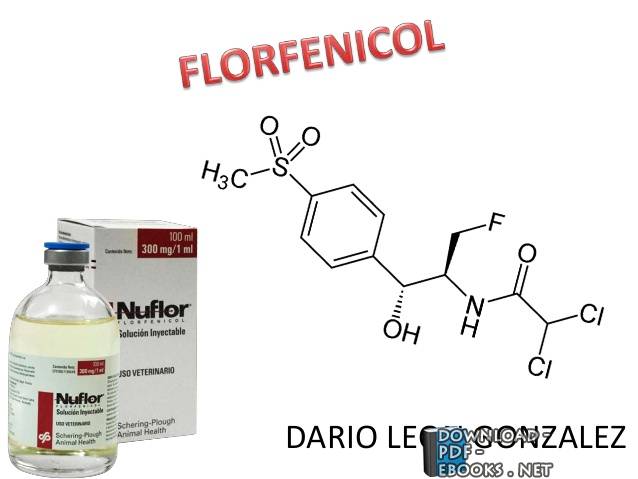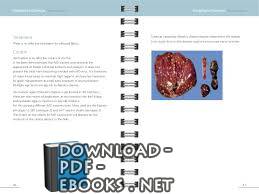كتاب Florfenicol
Florfenicol من كتب طب بيطرى © 2007 The United States Pharmacopeial Convention All rights reserved 1 FLORFENICOL (Veterinary—Systemic) Some commonly used brand names for veterinary-labeled products are: Aquaflor and Nuflor. Note: For a listing of dosage forms and brand names by country availability, see the Dosage Forms section(s). Category: Antibacterial (systemic). Indications Note: The text between EL US and EL describes uses that are not included in U.S. product labeling. Text between EL CAN and EL describes uses that are not included in Canadian product labeling. The EL US or EL CAN designation can signify a lack of product availability in the country indicated. See the Dosage Forms section of this monograph to confirm availability. General considerations Florfenicol is a broad-spectrum, pr imarily bacteriostatic, antibiotic with a range of activity similar to that of chloramphenicol, including many gram-negative and gram-positive organisms; {R-1} however, florfenicol does not carry the risk of inducing human aplastic anemia that is asso ciated with chloramphenicol. {R-13} Florfenicol has been dem onstrated to be active in vitro and in vivo against Mannheimia (Pasteurella) haemolytica, Pasteurella multocida, and Haemophilus somnus. {R-1; 2} In vitro studies have demonstrated florfenicol activity against Enterobacter cloacae, Escherichia coli, Klebsiella pneumoniae, Salmonella typhi, and Shigella dysenteriae {R-2; 15; 16} but with at least a 2- to 10-fold higher minimum inhibitory con centration than that for the Mannheimia, Pasteurella and Haemophilus species listed above. {R-15; 16} It also has activity against some chloramphenicol- resistant strains of bacteria, {R-17} possibly because it is less affected by the major enzyme produced in plasmid-mediated bacterial resistance against chloram phenicol and thiamphenicol. {R-2; 26} Although the activity of florfenicol against obligate anaerobes is not addressed in the literature, it is likely to be quite effective. {R-28} Accepted EL CAN Enteric septicemia (treatment) EL — Catfish: Florfenicol Type A medicated article is indicated in the control of mortality due to enteric septicemia caused by susceptible strains of Edwardsiella ictaluri . {R-36} EL US Furunculosis (treatment) EL — Salmon: Florfenicol Type A medicated article is indicated in the treatment of furunculosis caused by susceptible strains of Aeromonas salmonicida . {R-11} EL US Keratoconjunctivitis, infectious (treatment) EL — Cattle: Florfenicol injection is indicated in Canadian product labeling in the treatment of infectious bovine keratoconjunctivitis caused by Moraxella bovis. {R-3; 33; 34} Pneumonia, bacterial (treatment)— Cattle: Florfenicol injection is indicated in the treatment of bacterial pneumonia and associated respiratory infections (bovine respiratory disease complex) in cattle caused by susceptible H. somnus, M. haemolytica, and P. multocida. {R-1; 3} EL CAN Florfenicol injection is also indicated in the control of bacterial pneumonia and associated respiratory disease in cattle at high risk of developing infection associated with susceptible H. somnus, M. haemolytica, and P. multocida. EL {R- 1; 3; 32} Pigs : EL CAN Florfenicol oral solution EL and EL US florfenicol injection EL are indicated in the treatment of bacterial pneumonia and associated respiratory infec tions caused by susceptible Actinobacillus pleuropneumoniae, P. multocida, EL CAN Salmonella choleraesuis, and Streptococcus suis Type 2 EL . {R-3; 37} Pododermatitis, infectious (treatment)— Cattle: Florfenicol injection is indicated in the treatment of infectious pododermatitis (interdigital phlegmon) asso ciated with susceptible Bacteroides melaninogenicus and Fusobacterium necrophorum. {R-1; 3; 30} Regulatory Considerations U.S.— Withdrawal times have been estab lished for florfenicol in catfish and cattle; however, it is not labeled for use in lactating dairy cattle or in veal calves (see the Dosage Forms section). {R-1; 36} Canada— Withdrawal times have been esta blished for florfenicol in cattle and salmon; however, it is not labeled for use in lactating dairy cattle or in veal calves (see the Dosage Forms section). {R-3; 11} Chemistry Source: A fluorinated derivative of thiamphenicol. {R-12} Chemical name: Acetamide, 2,2-dichloro- N -[1-(flouromethyl)-2- hydroxy-2-[4-(methylsulfonyl)phenyl]ethyl]-[ R -( R*,S* )]-. {R-4} Molecular formula: C 12 H 14 C l2 FNO 4 S. {R-14} Molecular weight: 358.21. {R-4} Description: Melting point 153 to 154 ̊ C. {R-12} Solubility: Soluble in water. {R-12; 13} Lipid soluble. {R-13} Pharmacology/Pharmacokinetics Mechanism of action/Effect: Florfenicol is a bacteriostatic antibiotic that inhibits protein synthesis by binding to ribosomal subunits of susceptible bacteria , leading to the inhibition of peptidyl transferase {R-1; 13; 26} and thereby preventing the transfer of amino acids to growing peptide chains and subsequent protein formation. The bacterial receptor that is the site of action for florfenicol is considered to be the same as that for chloramphenicol and thiamphenicol. {R-13; 26} In the treatment of bovine respiratory disease, florfenicol may be considered bactericidal against some Mannheimia ( Pasteurella) hemolytica and Pasteurella multocida when it is administered to achieve minimum inhibitory concentrations (MICs); {R-14} the minimum bactericidal concentrations (MBCs) are very close to the MICs. Florfenicol has a fluorine atom instead of the hydroxyl group located at C-3 in the structure of ch loramphenicol and thiamphenicol. {R-13} This may allow florfenicol to be less susceptible to deactivation by bacteria with plasmid-transm issible resistance that involves acetylation of the C-3 hydroxyl group in chloramphenicol and thiamphenicol, and prevents th eir interaction with bacterial ribosomes. {R-13; 26} Other actions/effects: Florfenicol, like thiamphenicol, lacks the nitro group located on the chloramphenicol aromatic ring that has been associated with chloramphenicol-induced, non–dose-related, irreversible aplastic anemia in people. {R-13; 24; 25} However, chloramphenicol and thiamphenico l also cause a dose-dependent, reversible bone marrow suppression in some animals and people {R-13} due to mitochondrial injury. {R-24} It is theoretically possible that florfenicol coul d cause some dose-dependent, reversible bone marrow suppression, but it has not been clinically reported. {R-13} Absorption: Bioavailability— Intramuscular administration: Calves, 3 to 6 months of age—78.5% (range 59.3 to 106%), with a dose of 20 mg per kg of body weight (mg/kg). {R-1; 2; 8} Cattle, lactating—38 ± 14%, with a dose of 20 mg/kg. {R-9} Horses —81%, with a dose of 22 mg/kg-
من كتب طب بيطرى - مكتبة كتب الطب.

قراءة كتاب Florfenicol أونلاين
معلومات عن كتاب Florfenicol:
© 2007 The United States Pharmacopeial Convention
All rights reserved
1
FLORFENICOL
(Veterinary—Systemic)
Some commonly used
brand names
for veterinary-labeled products
are:
Aquaflor
and
Nuflor.
Note: For a listing of dosage forms and brand names by country
availability, see the
Dosage Forms
section(s).
Category:
Antibacterial (systemic).
Indications
Note: The text between
EL
US
and
EL
describes uses that are not included
in U.S. product labeling. Text between
EL
CAN
and
EL
describes uses
that are not included in Canadian product labeling.
The
EL
US
or
EL
CAN
designation can signify a lack of product
availability in the country indicated. See the
Dosage Forms
section of this monograph to confirm availability.
General considerations
Florfenicol is a broad-spectrum, pr
imarily bacteriostatic, antibiotic
with a range of activity similar
to that of chloramphenicol,
including many gram-negative and gram-positive organisms;
{R-1}
however, florfenicol does not carry
the risk of inducing human
aplastic anemia that is asso
ciated with chloramphenicol.
{R-13}
Florfenicol has been dem
onstrated to be active
in vitro
and
in vivo
against
Mannheimia (Pasteurella) haemolytica, Pasteurella
multocida,
and
Haemophilus somnus.
{R-1; 2}
In vitro
studies have
demonstrated florfenicol activity against
Enterobacter cloacae,
Escherichia coli, Klebsiella pneumoniae, Salmonella typhi,
and
Shigella dysenteriae
{R-2; 15; 16}
but with at least a 2- to 10-fold
higher minimum inhibitory con
centration than that for the
Mannheimia, Pasteurella
and
Haemophilus
species listed
above.
{R-15; 16}
It also has activity against some chloramphenicol-
resistant strains of bacteria,
{R-17}
possibly because it is less affected
by the major enzyme produced in
plasmid-mediated bacterial
resistance against chloram
phenicol and thiamphenicol.
{R-2; 26}
Although the activity of florfenicol against obligate anaerobes is
not addressed in the literature, it
is likely to be quite effective.
{R-28}
Accepted
EL
CAN
Enteric septicemia (treatment)
EL
—
Catfish:
Florfenicol Type A
medicated article is indicated in
the control of mortality due to
enteric septicemia caused by
susceptible strains of
Edwardsiella
ictaluri
.
{R-36}
EL
US
Furunculosis (treatment)
EL
—
Salmon:
Florfenicol Type A
medicated article is indicated in the treatment of furunculosis
caused by susceptible strains of
Aeromonas salmonicida
.
{R-11}
EL
US
Keratoconjunctivitis, infectious (treatment)
EL
—
Cattle:
Florfenicol
injection is indicated in Canadian product labeling in the
treatment of infectious bovine keratoconjunctivitis caused by
Moraxella bovis.
{R-3; 33; 34}
Pneumonia, bacterial (treatment)—
Cattle:
Florfenicol injection is indicated in the treatment of
bacterial pneumonia and associated respiratory infections
(bovine respiratory disease
complex) in cattle caused by
susceptible
H. somnus, M. haemolytica,
and
P. multocida.
{R-1;
3}
EL
CAN
Florfenicol injection is also indicated in the control of
bacterial pneumonia and associated respiratory disease in
cattle at high risk of developing infection associated with
susceptible
H. somnus, M. haemolytica,
and
P. multocida.
EL
{R-
1; 3; 32}
Pigs
:
EL
CAN
Florfenicol oral solution
EL
and
EL
US
florfenicol injection
EL
are indicated in the treatment of bacterial pneumonia and
associated respiratory infec
tions caused by susceptible
Actinobacillus pleuropneumoniae,
P. multocida,
EL
CAN
Salmonella choleraesuis,
and
Streptococcus suis
Type
2
EL
.
{R-3; 37}
Pododermatitis, infectious (treatment)—
Cattle:
Florfenicol injection is
indicated in the treatment
of infectious pododermatitis
(interdigital phlegmon) asso
ciated with susceptible
Bacteroides
melaninogenicus
and
Fusobacterium necrophorum.
{R-1; 3; 30}
Regulatory Considerations
U.S.—
Withdrawal times have been estab
lished for florfenicol in catfish
and cattle; however, it is not labeled for use in lactating dairy
cattle or in veal calves
(see the
Dosage Forms
section).
{R-1; 36}
Canada—
Withdrawal times have been esta
blished for florfenicol in cattle
and salmon; however, it is not
labeled for use in lactating
dairy cattle
or in veal calves (see the
Dosage Forms
section).
{R-3; 11}
Chemistry
Source:
A fluorinated derivative of thiamphenicol.
{R-12}
Chemical name:
Acetamide, 2,2-dichloro-
N
-[1-(flouromethyl)-2-
hydroxy-2-[4-(methylsulfonyl)phenyl]ethyl]-[
R
-(
R*,S*
)]-.
{R-4}
Molecular formula:
C
12
H
14
C
l2
FNO
4
S.
{R-14}
Molecular weight:
358.21.
{R-4}
Description:
Melting point 153 to 154
̊
C.
{R-12}
Solubility:
Soluble in water.
{R-12; 13}
Lipid soluble.
{R-13}
Pharmacology/Pharmacokinetics
Mechanism of action/Effect:
Florfenicol is a bacteriostatic
antibiotic that inhibits protein synthesis by binding to ribosomal
subunits of susceptible bacteria
, leading to the inhibition of
peptidyl transferase
{R-1; 13; 26}
and thereby preventing the transfer of
amino acids to growing peptide
chains and subsequent protein
formation. The bacterial receptor that is the site of action for
florfenicol is considered to be the same as that for
chloramphenicol and thiamphenicol.
{R-13; 26}
In the treatment of
bovine respiratory disease, florfenicol may be considered
bactericidal against some
Mannheimia
(
Pasteurella) hemolytica
and
Pasteurella multocida
when it is administered to achieve
minimum inhibitory concentrations (MICs);
{R-14}
the minimum
bactericidal concentrations (MBCs) are very close to the MICs.
Florfenicol has a fluorine atom instead of the hydroxyl group located
at C-3 in the structure of ch
loramphenicol and thiamphenicol.
{R-13}
This may allow florfenicol to be
less susceptible to deactivation
by bacteria with plasmid-transm
issible resistance that involves
acetylation of the C-3 hydroxyl
group in chloramphenicol and
thiamphenicol, and prevents th
eir interaction with bacterial
ribosomes.
{R-13; 26}
Other actions/effects:
Florfenicol, like thiamphenicol, lacks the
nitro group located on the chloramphenicol aromatic ring that has
been associated with
chloramphenicol-induced, non–dose-related,
irreversible aplastic anemia in people.
{R-13; 24; 25}
However,
chloramphenicol and thiamphenico
l also cause a dose-dependent,
reversible bone marrow suppression in some animals and
people
{R-13}
due to mitochondrial injury.
{R-24}
It is theoretically
possible that florfenicol coul
d cause some dose-dependent,
reversible bone marrow suppression, but it has not been clinically
reported.
{R-13}
Absorption:
Bioavailability—
Intramuscular administration:
Calves,
3 to 6 months of age—78.5% (range 59.3 to 106%),
with a dose of 20 mg per kg of body weight (mg/kg).
{R-1;
2; 8}
Cattle,
lactating—38
±
14%, with a dose of 20 mg/kg.
{R-9}
Horses
—81%, with a dose of 22 mg/kg
عدد مرات التحميل : 18009 مرّة / مرات.
تم اضافته في : السبت , 26 مارس 2016م.
حجم الكتاب عند التحميل : 164.5 كيلوبايت .
تعليقات ومناقشات حول الكتاب:
Florfenicol من كتب طب بيطرى
FLORFENICOL
(بيطري - جهازي )
بعض
الأسماء التجارية الشائعة الاستخدام
للمنتجات ذات العلامات البيطرية
هي:
Aquaflor
و
Nuflor.
ملاحظة: للحصول على قائمة بأشكال الجرعات والأسماء التجارية حسب
توفر البلد ، راجع قسم (أقسام)
نماذج الجرعات
.
التصنيف:
مضاد للجراثيم (جهازي).
مؤشرات
ملحوظة: يصف النص بين
EL
US
و
EL
الاستخدامات التي لم يتم تضمينها
في ملصقات المنتجات الأمريكية. يصف النص بين
EL
CAN
و
EL
الاستخدامات
التي لم يتم تضمينها في ملصقات المنتجات الكندية.
و
EL
الولايات المتحدة
أو
EL
CAN
تسمية يمكن أن تدل على عدم وجود المنتج
توفر في وأشار البلاد. راجع قسم
أشكال الجرعات
في هذه الدراسة لتأكيد التوافر.
اعتبارات عامة فلورفينيكول هو مضاد حيوي
واسع الطيف
ومقاوم للجراثيم
وله نطاق من النشاط مشابه لنشاط
الكلورامفينيكول ،
بما في ذلك العديد من الكائنات سالبة الجرام وإيجابية الجرام ؛
{R-1}
ومع ذلك ، لا يحمل florfenicol مخاطر التسبب
في
فقر الدم اللاتنسجي البشري
المرتبط بالكلورامفينيكول.
{R-13}
تم عرض فلورفينيكول
onstrated أن تكون نشطة
في المختبر
و
في الجسم الحي
ضد
Mannheimia (الباستوريلة) الحالة للدم، الباستوريلة
القتالة،
و
المستدمية somnus.
{R-1 ؛ 2}
أظهرت
الدراسات في المختبر
نشاط فلورفينيكول ضد
Enterobacter cloacae و
Escherichia coli و Klebsiella pneumoniae و Salmonella typhi
و
Shigella dysenteriae
{R-2؛ 15؛ 16}
ولكن مع ما لا يقل عن 10 2- لأضعاف
أعلى الحد الأدنى المثبطة يخدع
وحدانية التركيز من ذلك ل
Mannheimia، الباستوريلة
و
المستدمية
الأنواع المدرجة
أعلاه.
{R-15 ؛ 16}
كما أن له نشاطًا ضد بعض
سلالات البكتيريا المقاومة للكلورامفينيكول ،
{R-17}
ربما لأنه أقل تأثرًا
بالأنزيم الرئيسي المنتج في المقاومة
البكتيرية بوساطة البلازميد
ضد الكلورام
الفينيكول والثيامفينيكول.
{R-2 ؛ 26} على
الرغم من أن نشاط florfenicol ضد اللاهوائية الملزمة
لم يتم تناوله في الأدبيات ، فمن
المحتمل أن يكون فعالاً للغاية.
{R-28}
مقبول
EL
CAN
تسمم الدم المعوي (العلاج)
EL
-
سمك السلور: يُشار إلى مادة
فلورفينيكول من النوع أ
في
السيطرة على الوفيات بسبب
تسمم الدم المعوي الناجم عن
سلالات حساسة من
Edwardsiella
ictaluri
.
{R-36}
EL
US
Furunculosis (العلاج)
EL
-
Salmon:
Florfenicol Type A
يُشار إلى مقال طبي في علاج داء الدمامل
الناجم عن سلالات حساسة من
Aeromonas salmonicida
.
{R-11}
EL
US
Keratoconjunctivitis ، العدوى (العلاج)
EL
-
Cattle: يشار إلى حقن
الفلورفينيكول
في ملصق المنتج الكندي في
علاج التهاب القرنية والملتحمة البقري المعدي الناجم عن
Moraxella bovis.
{R-3 ؛ 33 ؛ 34}
الالتهاب الرئوي والبكتيرية (العلاج) -
الأنعام:
يشار إلى حقن Florfenicol في علاج
الالتهاب الرئوي الجرثومي وما يرتبط بها من التهابات الجهاز التنفسي
(أمراض الجهاز التنفسي البقري
معقدة) في الماشية التي تسببها
عرضة
somnus H.، M. الحالة للدم،
و
P. القتالة.
{R-1 ؛
3}
EL
CAN
يشار حقن Florfenicol أيضا في السيطرة على
الالتهاب الرئوي الجرثومي وما يرتبط بها من أمراض الجهاز التنفسي في
الماشية في خطر كبير لتطوير العدوى المرتبطة
عرضة
somnus H.، M. الحالة للدم،
و
P. القتالة.
EL
{R-
1 ؛ 3 ؛ 32}
الخنازير
: يُشار إلى
EL
CAN
Florfenicol عن طريق الفم
EL
و
EL
US
florfenicol injection
EL
في علاج الالتهاب الرئوي الجرثومي
والتهابات الجهاز التنفسي المصاحبة
التي تسببها حساسية
Actinobacillus pleuropneumoniae و
P. multocida و
EL
CAN
Salmonella choleraesuis
و
Streptococcus suis
Type
2
EL
.
{R-3 ؛ 37}
التهاب الجلد ، المعدي (العلاج) -
الماشية:
يشار
إلى حقن
الفلورفينيكول في علاج التهاب الجلد المعدي.
(فلغمون بين الأصابع) أسو
ciated مع عرضة
باكتيرويديز
الميلانينية
و
المغزلية الناخرة.
{R-1 ؛ 3 ؛ 30}
اعتبارات تنظيمية في
الولايات المتحدة -
تم تحديد أوقات السحب
للفلورفينيكول في سمك السلور
والماشية. ومع ذلك ، لم يتم تصنيفها للاستخدام في
الأبقار الحلوب المرضعة أو في عجول العجل
(انظر قسم
أشكال الجرعات
).
{R-1 ؛ 36}
كندا -
تم تحديد أوقات السحب
للفلورفينيكول في الأبقار
والسلمون. ومع ذلك ، لم يتم
تصنيفها للاستخدام في
الأبقار الحلوب المرضعة
أو في عجول العجل (انظر
أشكال الجرعات
الجزء).
{R-3 ؛ 11} مصدر
الكيمياء
:
مشتق مفلور من ثيامفينيكول.
{R-12}
الاسم الكيميائي:
أسيتاميد ، 2،2-ثنائي كلورو-
N
- [1- (فلوروميثيل) -2-
هيدروكسي-2- [4- (ميثيل سلفونيل) فينيل] إيثيل] - [
R
- (
R * ، S *
)] -.
{R-4}
الصيغة الجزيئية:
C
12
H
14
C
l2
FNO
4
S.
{R-14}
الوزن الجزيئي:
358.21.
{R-4}
الوصف:
نقطة الانصهار 153 إلى 154
درجة
مئوية
{R-12}
الذوبان:
قابل للذوبان في الماء.
{R-12 ؛ 13}
قابل للذوبان في الدهون.
{R-13}
علم الأدوية / حركية الدواء
آلية التأثير / التأثير:
فلورفينيكول
مضاد حيوي مضاد للجراثيم يثبط تخليق البروتين عن طريق الارتباط بالوحدات الريبوزومية
للبكتيريا الحساسة
، مما يؤدي إلى تثبيط
الببتيدل ترانسفيراز
{R-1 ؛ 13 ؛ 26}
وبالتالي منع انتقال
الأحماض الأمينية إلى
سلاسل الببتيد النامية
وتكوين البروتين اللاحق . يُعتبر المستقبل البكتيري الذي هو موقع عمل
فلورفينيكول هو نفسه بالنسبة
للكلورامفينيكول والثيامفينيكول.
{R-13 ؛ 26}
في علاج
أمراض الجهاز التنفسي البقري، يمكن اعتبار florfenicol
جراثيم ضد بعض
Mannheimia
(
الباستوريلة) hemolytica
و
الباستوريلة القتالة
عندما يدار لتحقيق
التركيز المثبط الأدنى (البلدان المتوسطة الدخل)؛
{R-14}
الحد الأدنى
لتركيزات مبيد الجراثيم (MBCs) قريب جدًا من MICs.
يحتوي فلورفينيكول على ذرة فلور بدلاً من مجموعة الهيدروكسيل الموجودة
في C-3 في بنية ch
loramphenicol و thiamphenicol.
{R-13}
قد يسمح هذا للفلورفينيكول بأن يكون
أقل عرضة للتعطيل
بواسطة البكتيريا ذات
المقاومة التي تنقل البلازميد والتي تتضمن
أستلة
مجموعة هيدروكسيل C-3 في الكلورامفينيكول
والثيامفينيكول ، ويمنع
التفاعل مع
الريبوسومات البكتيرية .
{R-13 ؛ 26}
إجراءات / تأثيرات أخرى:
فلورفينيكول ، مثل ثيامفينيكول ، يفتقر إلى
مجموعة النيترو الموجودة على الحلقة العطرية للكلورامفينيكول التي
ارتبطت بفقر الدم اللاتنسجي
الناجم عن الكلورامفينيكول ، وغير المرتبط بالجرعة ، والذي
لا رجعة فيه.
{R-13 ؛ 24 ؛ 25}
ومع ذلك،
الكلورامفينيكول وthiamphenico
لتر أيضا سبب لذلك، تعتمد على الجرعة
عكسها نخاع العظم في بعض الحيوانات و
الناس
{R-13}
بسبب الاصابة الميتوكوندريا.
{R-24}
من
الممكن نظريًا أن يتسبب florfenicol coul
d في بعض
تثبيط نخاع العظم المعتمد على الجرعة والعكس ، ولكن لم يتم
الإبلاغ عنه سريريًا .
{R-13}
الامتصاص:
التوافر البيولوجي - الإعطاء
العضلي:
العجول ، من
3 إلى 6 أشهر من العمر - 78.5٪ (من 59.3 إلى 106٪) ،
بجرعة 20 مجم لكل كيلوجرام من وزن الجسم (مجم / كجم).
{R-1 ؛
2 ؛ 8}
الأبقار ،
المرضعات: 38
±
14٪ ، بجرعة 20 مجم / كجم.
{R-9}
الخيول
—81٪ ، بجرعة 22 مجم / كجم
Florfenicol
florfenicol في الدواجن
florfenicol حقن
florfenicol الذوبان
فلورفينيكول
 مهلاً !
مهلاً !قبل تحميل الكتاب .. يجب ان يتوفر لديكم برنامج تشغيل وقراءة ملفات pdf
يمكن تحميلة من هنا 'تحميل البرنامج'

نوع الكتاب : pdf.
اذا اعجبك الكتاب فضلاً اضغط على أعجبني و يمكنك تحميله من هنا:


كتب اخرى في كتب طب بيطرى

Equine Locomotion, Second Edition (2013) PDF
قراءة و تحميل كتاب Equine Locomotion, Second Edition (2013) PDF مجانا

Harpers illustrated Biochemistry 27th edition PDF
قراءة و تحميل كتاب Harpers illustrated Biochemistry 27th edition PDF مجانا
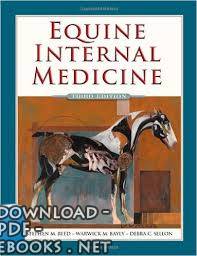
Equine Internal Medicine (3rd Edition) PDF
قراءة و تحميل كتاب Equine Internal Medicine (3rd Edition) PDF مجانا
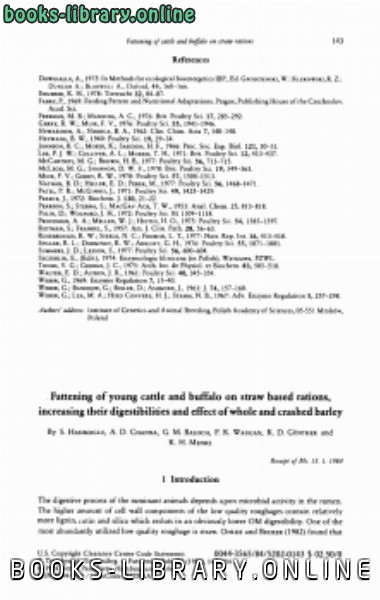
Fattening of young cattle and buffalo on straw based rations,increasing their digestibilities and effect of whole and crashed barley PDF
قراءة و تحميل كتاب Fattening of young cattle and buffalo on straw based rations,increasing their digestibilities and effect of whole and crashed barley PDF مجانا

Femtomolar bradykinin-induced relaxation of isolated bovine coronary arteries, mediated by endothelium-derived nitric oxide PDF
قراءة و تحميل كتاب Femtomolar bradykinin-induced relaxation of isolated bovine coronary arteries, mediated by endothelium-derived nitric oxide PDF مجانا
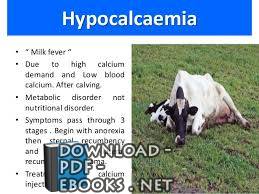
Factors Affecting the Success Rate of Treatment of Recumbent Dairy Cows Suffering from Hypocalcaemia PDF
قراءة و تحميل كتاب Factors Affecting the Success Rate of Treatment of Recumbent Dairy Cows Suffering from Hypocalcaemia PDF مجانا
